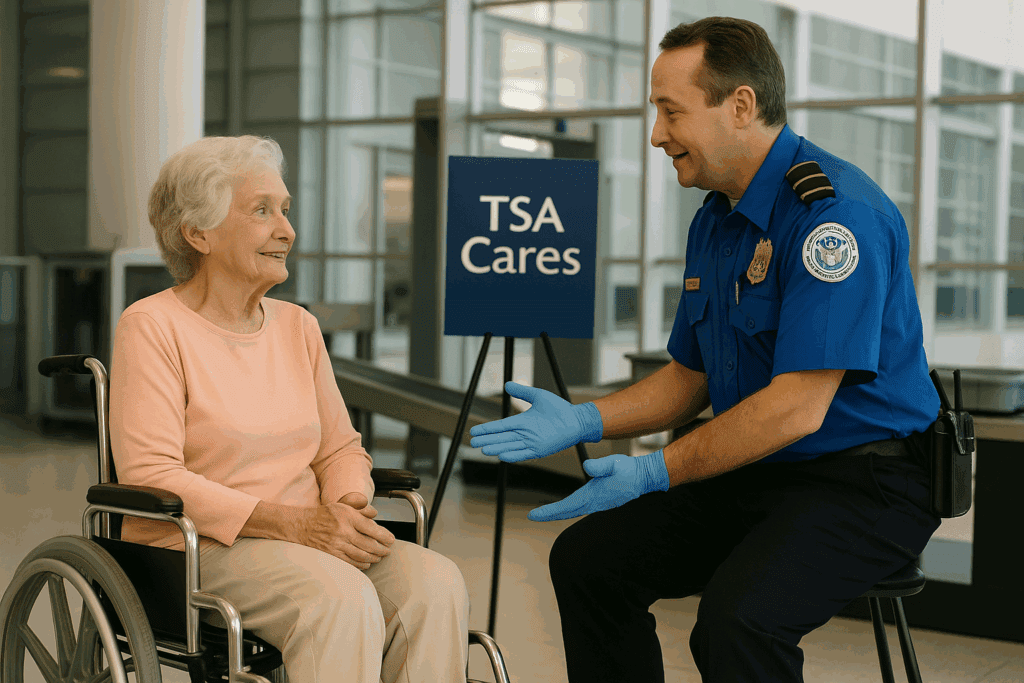For many ZestYears seniors, the joy of travel can be overshadowed by the challenges of air travel with a wheelchair or scooter. From getting through TSA to ensuring safe handling of mobility aids, flying can feel stressful. This article brings real solutions for making flying more accessible and less overwhelming.
Know Your Rights and Plan Ahead
Under the Air Carrier Access Act and the Department of Transportation’s Airline Passengers with Disabilities Bill of Rights (2022), travelers with mobility devices are entitled to respectful, safe, and prompt assistance. Airports and airlines must help with pre-boarding, security screening, boarding, and retrieving your device after landing. Still, nearly 70% of passengers who travel with a wheelchair report damage to their device, and 56% experience delays upon arrival, according to a Paralyzed Veterans of America survey.
To avoid problems, call the airline when booking to confirm their procedures for your specific wheelchair or scooter. Ask whether your device can be stored in the cabin if it’s collapsible. Always request pre-boarding, which allows extra time to transfer calmly and ensure your equipment is properly handled.

Navigating TSA with Ease
TSA offers a helpful program called TSA Cares, which allows passengers with disabilities to request assistance through security. Calling 72 hours in advance helps TSA prepare staff to handle your device properly and minimize confusion at the checkpoint. While the program does not include an escort through the airport, it can greatly reduce stress at security.
At screening, staff may request battery removal for powered devices, and you might be asked to send your wheelchair through an X-ray machine. Since not every agent is well-trained, many travelers attach polite reminder tags to their wheelchairs asking for careful handling. As one traveler put it, “I always bring a simple laminated card that says, ‘Essential Medical Device, Please Handle with Care.’ It’s a small step, but it helps the staff pause before rushing.”
“I dreaded flying, fearing my wheelchair would break or I’d be stranded, but requesting TSA Cares and clearing pre-boarding made my last trip smooth, I will now plan to do it every time I travel.” -Carol, Mclean,VA
Boarding, Seating & Aisle Chairs
Pre-boarding allows you extra time to transfer into your seat or arrange for your device to be stored. Airlines typically provide aisle chairs to help move you into the plane seat, though many travelers find these small and uncomfortable. Booking a seat with extra space can make the process more manageable, and it’s wise to confirm aisle chair availability when booking.
Once onboard, most wheelchairs and scooters are stored in the cargo hold. Tag your equipment with your name, phone number, destination, and a “fragile” label. Some airlines now notify passengers when their mobility device has been safely loaded or unloaded to give peace of mind during travel.
“I dreaded flying, fearing my wheelchair would break or I’d be stranded, but requesting TSA Cares and clearing pre-boarding made my last trip smooth, I will now plan to do it every time I travel.” -Carol, Mclean,VA
At Your Destination: Recovery & Complaints
After landing, airport staff should return your wheelchair or scooter promptly at the gate. However, delays remain common. The Paralyzed Veterans of America survey found that 67% of travelers waited more than 15 minutes for their equipment, sometimes causing missed connections and added stress. Requesting arrival assistance, just as at departure, can help smooth this process.
If your equipment is damaged, file a claim immediately. DOT rules now require airlines to outline repair or replacement options and reimburse costs when damage occurs. Always document the condition of your device upon arrival with photos and notes to support any claim.
Real Stories from the Sky
Eleanor, 74, from New Orleans recently flew cross-country to visit her granddaughter. She shared, “I hadn’t flown in years because I was so nervous about my scooter being damaged. But this time, I called TSA Cares and the airline weeks ahead. The staff was ready for me. They walked me through every step, and my scooter was waiting at the gate when I landed.”
On the other hand, Robert, 69, from Chicago had a tougher experience on his recent trip to Florida. “When we landed, my wheelchair wasn’t brought up to the gate. I had to wait almost 40 minutes, and they couldn’t even tell me where it was at first. Thankfully, it arrived intact, but the uncertainty made the whole experience stressful. Next time, I’ll definitely make sure arrival assistance is fully arranged ahead of time.”

Air travel for seniors with mobility devices doesn’t have to feel overwhelming. By understanding your rights, communicating with airlines, arranging for TSA Cares, and preparing for both boarding and arrival, you can regain control of your travel experience. Problems may still arise, but with preparation and confidence, you can navigate them and enjoy the freedom of flight.
About the Author
Written by the ZestYears Editorial Team
Sources:
Paralyzed Veterans of America Survey, 2022
Air Carrier Access Act / DOT Bill of Rights, 2022
DOT rule on wheelchair handling, January 2025
WCIV Charleston News, 2023




